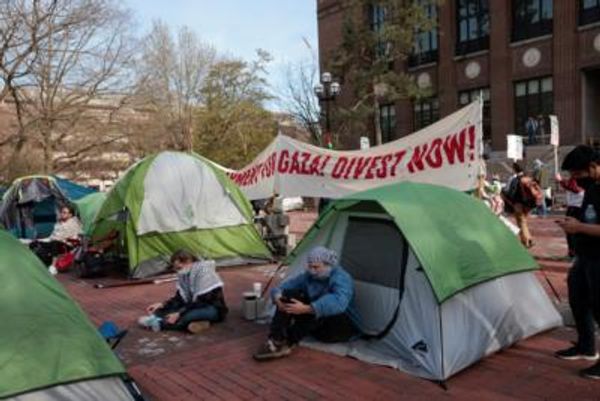The recent selloff in the stock market could be the start of a reprieve, hedge fund experts and market strategists said.
The Dow rose by 618 points or 1.98% on Monday following Friday’s downturn that reached bear market territory. The S&P 500 also increased by 1.86% while the Nasdaq edged higher by 1.6%.
The slide in the stock market has brought down tech and biotech companies along with a cluster of retailers facing higher inflation and inventory levels as consumers have started to cut back on spending, including Target ((TGT)) and Walmart ((WMT)).
Investors should stay in the market and purchase high quality companies in sectors that are trading at a deep discount due to interest rates and fears of further monetary tightening, Thomas Hayes, chairman of Great Hill Capital in New York, told TheStreet.
“We are constructive at these levels and were net buyers last week during the disorderly selling periods,” he said.
There could be relief in sight because some of the selloff in recent weeks were the result of “forced selling” of unnatural margin calls and fund redemptions from investors who had too much leverage," Hayes said.
The Market Could be Close to a Bottom
The bottom of the market could have been marked by the letter on May 18 that hedge fund Melvin Capital sent to its investors that the fund was closing down, he said.
“Between Gabe Plotkin’s $7.8 billion Melvin Capital fund and Tiger Global losing $17 billion on its tech holdings, much of the pain may now be in the rearview mirror,” Hayes said. “If you were wondering why Amazon, Expedia and Uber were selling off like they were going out of business – now you know.”
A recent Bank of America global fund manager survey showed that investment managers have the highest cash balances since September 11, 2001.
The 5-year average multiple on the S&P 500 is 18.6 times and the market is currently trading at 17 times 2022 earnings per share and 15.5 times 2023 consensus EPS.
While multiples could decline, interest rates “would have to go much higher to justify that magnitude of multiple contraction,” he said. “The yield for the 10-year Treasury was 6.82% in 2000, which is a big difference compared to the brief 3.2% yield last week. It is consistent with the peaks in October 2018 of 3.25% and Jan 2014 at 3.03% before receding aggressively.”
The market could be close to a bottom, but has not reached it yet, Art Hogan, chief market strategist B Riley Financial, told TheStreet. The average stock in the NASDAQ composite index is down 40%.
"We’ve seen a lot of multiple contractions and taken together with peak pessimism, we would suggest that we’re getting close to, if not at a bottom," he said.
The long-term average multiple for the S&P 500 going back over the last 25 years mirrors what it is currently trading it - about 16.6 times forward earnings, down from 21.5 times at the start of the year, Hogan said.
"That is just about exactly what If you went back just 10 years the average multiple of 18.5 times, so we are two multiple turns lower than the contemporary average," he said. "The S&P 500 has less than 20% of its constituent company‘s trading above their 200-day moving average. That number is 15% for the Nasdaq."
Investor sentiment has declined rapidly - American Association of Individual Investors (AAII) is at lows that have not been seen since the great financial crisis back in 2008 and 2009.
"Institutional investors have the highest level of cash in their portfolios going back to 08 and 09 as well," Hogan said.
Another Pullback Could Occur
A one-day gain in the market is not proof that more declines could occur in the market, Greg McBride, chief financial analyst for Bankrate, a New York-based financial data company, told TheStreet. The odds of a recession are not off the table since inflation rates still remain high.
“Until there is irrefutable evidence that inflation is headed back down and that a recession is not in the cards, calling a market bottom is premature,” he said. “Even if the market returned to January 3 levels, that will all go out the window if a recession materializes in 2023.”
The market turmoil is likely to continue and investors should face the possibility of another pullback, McBride said.
“Investors should prepare for continued volatility and uncertainty in markets throughout 2022 and into 2023,” he said. “That is par for the course with inflation at a four decade high and the Federal Reserve’s tightening policy at a faster rate than we’ve seen in decades. 2021 was the anomaly – a year where the market goes up, virtually uninterrupted and without even a 5% pullback at any point.”
The markets have not reached their bottom because the macroeconomic conditons such as the Federal Reserve being more accomodative do not exist, Steve Sosnick, chief strategist for Interactive Brokers, told TheStreet.
"Everyone is asking if we have hit the bottom," he said. "If everyone is wondering if it is safe to buy, then we have not hit the bottom. The condiitons aren't there yet. Everyone is looking for factors to signal the bottom. Capitulation may not have occurred."
Investors have been spooked since the natural state of the market is for it to go up, Sosnick said.
"People expect that the market will rebound," he said. "Some of them have seen a market that wasn't supported by a Fed stimulus."
Investors Should Follow Buffett's Strategy
Investors should be putting their cash to work like Berkshire Hathaway CEO Warren Buffett, Hayes said.
The billionaire spent about one third of his cash hoard or approximately $50 billion to work since the beginning of the year.
“While others were puking, Warren was shopping,” he said.
During the market downturn, Buffett’s y (BRK.A) - Get Berkshire Hathaway Inc. Class A Report (BRK.B) - Get Berkshire Hathaway Inc. Class B Report bought stocks on the dip and added to oil companies such as Occidental Petroleum (OXY) - Get Occidental Petroleum Corporation Report which is one of Berkshire's 10 largest holdings.
The conglomerate also purchased more shares of Chevron, which was another addition to its original position that vaulted the investment into the conglomerate's top four common stock holdings.
Through the end of 2021, Berkshire Hathaway spent $11.6 billion on insurance company Alleghany (Y) - Get Alleghany Corporation Report. During the company’s annual April shareholder meeting, Buffett revealed that Berkshire owns a 9.5% stake of gaming company Activision Blizzard from its initial stake of 2%, that is set to be purchased by Microsoft (MSFT) - Get Microsoft Corporation Report.







